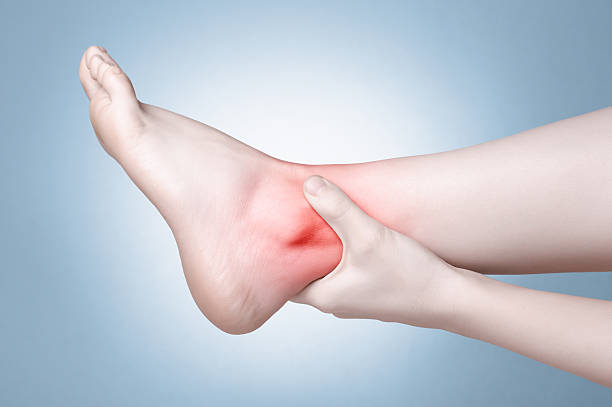Ankle pain is any type of pain or discomfort in your ankle. This pain may be caused by an injury (such as a sprain) or a medical condition (such as arthritis).
Ankle sprains are one of the most common causes of ankle pain, accounting for 85% of all ankle injuries. Sprains can occur when your ligaments (tissues that connect bones) are torn or overstretched.
Most ankle sprains are lateral sprains that occur when the foot rolls, causing the lateral ankle to twist to the ground. This action stretches or tears the ligaments. A sprained ankle usually swells and bruises for about 7 to 14 days. However, serious injuries can take months to fully recover.
There are ways to treat ankle pain.
1. You can compress the affected ankle
People with sore ankles should compress the affected area to help reduce swelling and control the wound. There are individuals who can buy compression bandages in this general purpose pharmacy for this particular purpose. Compression bandages use elastic techniques to gently compress the wrapped area. This can help promote blood circulation by narrowing blood vessels and can prevent fluid accumulation. Compression socks are an option if the compression socks are long enough to compress the ankles, but for patients with varicose veins and chronic pain, they are better than those with acute injuries. After an injury, individuals should immediately press the ankle, but do not press the ankle too long. Eventually normal blood flow needs to be restored to promote healing.
2. If possible, you can lose excess weight
If an individual loses extra weight, it can relieve some ankle pain. If an individual is heavy, the impact on the legs is greater when walking or running. Heavier patients also tend to be more prone to inflammatory foot problems, such as tendinitis, than non-heavier patients. Patients may also develop plantar fasciitis, which occurs when the plantar fascia is inflamed. This causes severe pain in the heel and may run through the ankle and bottom of the calf. Heavier people may also develop osteoarthritis more easily, a serious disease that causes bone and joint degeneration. Researchers have found that losing just ten to twenty-five pounds of body weight can make a big difference in pain levels.
3. Take a break and add some ice to ease the pain
Resting and icing are easy ways to care for your ankles and control swelling to speed healing. When an individual rests the affected ankle, an attempt should be made to rest it on the head of the pillow or other raised surface to keep the ankle above the hip. This helps maintain blood circulation and prevents fluid from accumulating in the feet. Patients should try to avoid stepping on their feet, which means they should lie down or sit down as much as possible, and then use crutches when they have to get up. Continued walking on the injured ankle will make the situation worse and slow down its overall healing time.
Treatment options for ankle pain
If lifestyle changes and over-the-counter treatments do not alleviate pain, then it may be time to consider other options.
Orthopedic shoe inserts or foot or ankle support are a good non-surgical way to help you readjust your joints and avoid pain and discomfort. The inserts come in different sizes and stiffnesses to support different parts of the foot and redistribute weight, thereby reducing pain.
The ankle brace works in much the same way. These brackets come in different sizes and support levels. Some can be worn with ordinary shoes, while others are more suitable, like plaster covering the ankles and feet.



